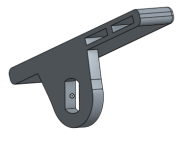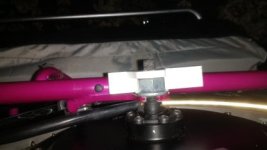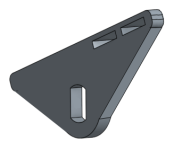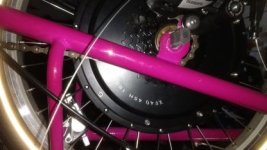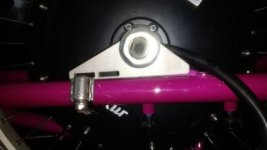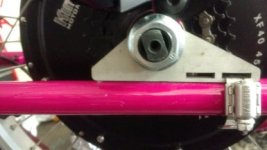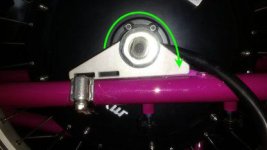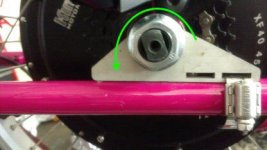ido said:
I had a chance to review my orders. Here's what I got:
MXUS "3K-Turbo" (V3) 45mm Motor - 3T (11.9Kv)
Since you already have it, this might not be helpful, but since I have tried both on my trike now:
The 3T is meant as a "speed" motor (vs the 4T). If you want more torque at startup, I'd go for the 4T. If you want more speed, keep the 3T. I found the 4T definitely better for me, since it's speed on 14s tops out just above my max allowed speed anyway, and has more startup thrust (which I need, partly to get out of the way of traffic starting up at intersections when I'm stuck in front of them).
The 3T should peak out around 32MPH, but only start out with around 70lbs of thrust from a stop (with 40A system current limit).
The 4T shoudl peak out around 24MPH, but will start out with around 90lbs of thrust.
This is a comparison of the two motors at 40A
http://www.ebikes.ca/simulator2/?bopen=true&motor=MX4503&motor_b=MX4504&batt=B4823_AC&hp=0&frame=mountain&mass=150&wheel=20i&cont=C40&cont_b=C40&batt_b=B4823_AC&wheel_b=20i&mass_b=150&hp_b=0&axis=mph&blue=Lbs
I'm not sure what phase amps you'd have with the 80A controller, so not sure what to put in the simulator for that, but with 140A phase then it goes way up in startup torque, though speeds stay the same.
http://www.ebikes.ca/simulator2/?bopen=true&motor=MX4503&motor_b=MX4504&batt=B4823_AC&hp=0&frame=mountain&mass=150&wheel=20i&cont=cust_80_140_0.03&cont_b=cust_80_140_0.03&batt_b=B4823_AC&wheel_b=20i&mass_b=150&hp_b=0&axis=mph&blue=Lbs
18FET 80A/95V Sine Wave Xie Chang Controller
Cycle Analyst V3 Direct Plug
EM3ev 14S 5P battery pack, 40A continuous, 80A peak
How long can the battery pack hold that 80A?
Cuz you said you have hills, and with an 80A controller, unless you use the CA to limit the max current, or the controller is programmed otherwise, or physically modified to reduce it's max current, you could end up pulling that 80A all the way up the hill depending on the load, hill, and speed you're attempting to keep up.
Assuming no limiting takes place, then how the battery responds to that depends on it's BMS. If the BMS has an overcurrent protection that kicks in when over 40A for a few seconds, then you'll lose power on the hills that take more than that. If it does not have overcurrent protection then it will begin heating the cells, and how long it does that will determine if problems occur because of it.
If you parallel two of the packs, it wouldn't be an issue (unless one of them runs low faster than the other and you're near the end of capacity for them on a long trip), but that's more space and weight on the bike (and cost to build). On the plus side, it'd at least double your range, though. Oh, and make takeoffs a bit faster, hill climbs a bit easier, because voltage won't sag as much under load.
Since you have the CA v3, though, your best option is to use it's limiting features to throttle back the controller so it doesn't go above 40A. (or if you have the option to limit it after a certain amount of time, to set that time to a very minimal amount so you can get a boost on startups from a stop but not longer than that).
There are specifics on how to set limiting (and everything else) up in the Unofficial User's Guide by Teklektik, latest version at
http://www.ebikes.ca/product-info/cycle-analyst-3.html
https://endless-sphere.com/forums/viewtopic.php?p=571345#p571345
